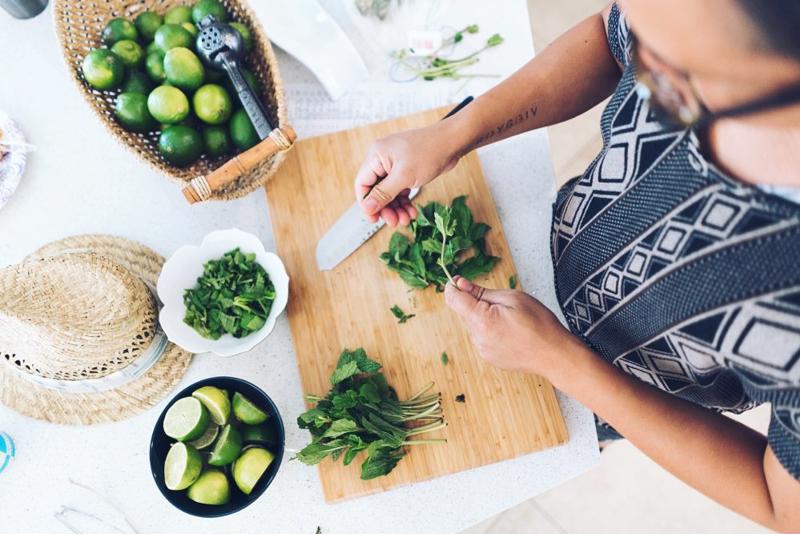When you’re making your way through the curriculum at an Austin culinary arts school, you’re sure to learn a lot about using herbs in your cooking. Both fresh and dried plants can contribute savory and aromatic characteristics that bring out the best in your dishes. Every chef keeps an assortment of go-to herbs like oregano, cilantro, chives, basil, parsley and rosemary at the ready.
These commonly used ingredients have endless uses, but sometimes you’re looking for a flavor that’s a little more unusual. Getting inventive with your choice of herbs can take food in surprising directions and make a meal an unforgettable experience. Take the time to familiarize yourself with some lesser known herbs and you could discover the perfect taste for your next creation.
Thai basil
“Thai basil is an essential part of Thai red and green curries.”
As the name implies, Thai basil is native to Southeast Asia. The narrow leaves provide a spicier taste than the varieties of basil you’re probably more accustomed to incorporating into your meals. That makes this herb an essential part of Thai red and green curries.
Thai basil is found in many other dishes, such as Taiwanese three-cup chicken, or San Bei Jei. The heavy use of the fresh herb is a key characteristic that sets this version of a traditional dish apart from its roots in southern China. According to Serious Eats, you should stir in two cups of basil as a finishing touch after cooking drumsticks, thighs or wings in a flavorful liquid.
Chervil
If you want to add an understated taste that’s similar to anise, then chervil is the right choice. Often referred to as French parsley, it’s a part of the classic mix, fines herbes, that also includes parsley, chives and tarragon. If you want to make the best use of chervil, keep in mind that its flavor is very mild: It will only come through in a delicate context like a salad or eggs.
 Adding some new herbs to your cabinet could change the way you cook.
Adding some new herbs to your cabinet could change the way you cook.Kaffir lime leaves
Kaffir limes are found throughout tropical Asia, and their leaves are a common part of Southeast Asian cooking that adds a strong citrus fragrance. The Food Network provided a recipe for the Thai hot and sour soup, tom yum, that involves boiling five of the leaves in vegetable broth, along with lemongrass and the spice galangal. Soto Ayam, an Indonesian chicken soup, also prominently includes the herb as part of its stock.
Ginger mint
A cross of corn mint and spearmint, ginger mint can be tasty in salads, broths, lemonade and tea. This herb is most commonly found in recipes for the Vietnamese noodle soup pho. The Heritage Garden at the University of Illinois Chicago suggested combining the chopped leaves with lemon juice, salt and pepper to spice up meat or fish.
Lemon verbena
For a versatile ingredient with a distinctive citrus flavor, try using the leaves of lemon verbena. Native to South America, this herb can be delicious in fish, chicken, sorbet or salad dressings.
The Kitchn suggested turning lemon verbena into a simple syrup that you can then conveniently mix into cocktails or desserts. First, chop the leaves and bruise them. In a saucepan, bring equal parts water and sugar to a simmer, stirring to dissolve. After two minutes, mix in the herbs and remove from heat, allowing 15 minutes for the syrup to steep.
With the right herbs, you can put exciting new spins on all your dishes. Experiment with some ingredients you’ve never tried before to find inspiration in their bold tastes or subtle shades.

